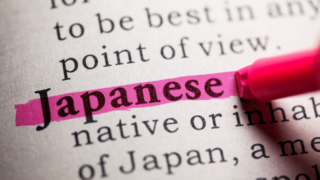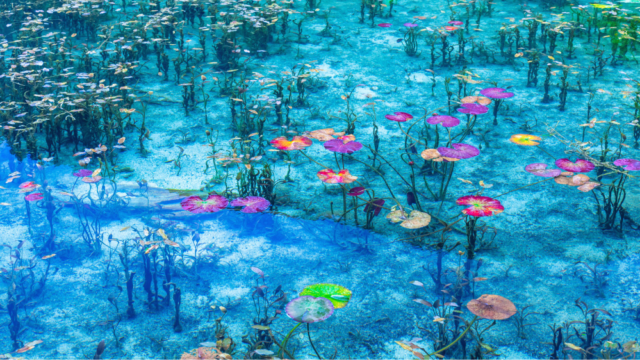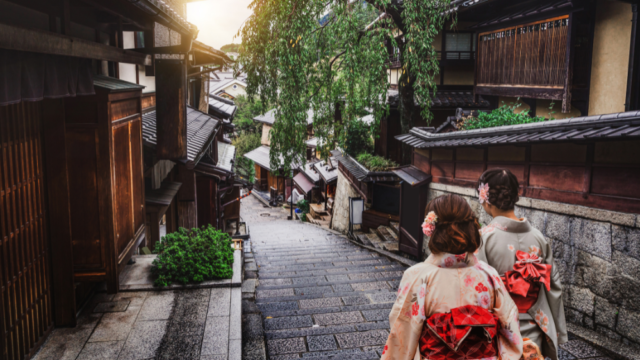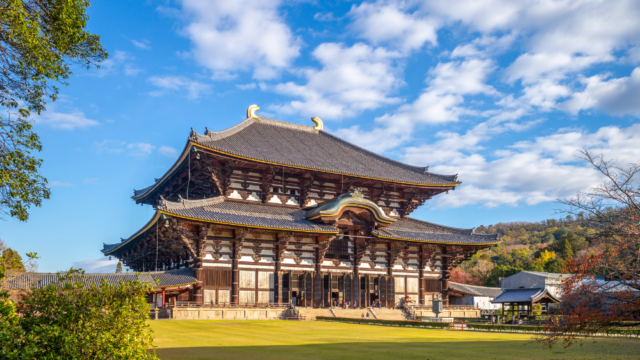Japan is one of the world’s top hot spring destinations. There are over 27,000 hot spring sources nationwide, producing approximately 2.6 million liters of hot spring water per minute. Of these, 47% are high-temperature springs with water temperatures above 42 degrees Celsius, making Japan a true hot spring paradise.
There are 3,085 hot spring areas in Japan, each with numerous accommodation facilities welcoming visitors. Many of these hot spring areas are located along volcanic belts, providing an abundant heat source. Additionally, the plentiful water resources brought by the rainy season, typhoons, and snowfall supply ample hot spring water, making hot springs enjoyable year-round.
Hot springs offer the perfect spot to refresh your body and mind while experiencing the power of nature. When traveling in Japan, be sure to visit a hot spring and experience its healing effects. Soaking in the soothing hot spring waters can help you relax and rejuvenate, providing a wonderful escape from everyday stress.
Japan’s hot spring destinations, with their beautiful natural landscapes, are waiting to welcome you. If you’re planning a trip to Japan, be sure to include a visit to a hot spring in your itinerary. A fantastic hot spring experience will make your journey even more special.
Now, let’s introduce the top 10 hot springs in Japan. These hot spring locations are particularly popular for their beauty and therapeutic benefits. Stay tuned for our next post, where we will provide detailed information on each of these amazing hot springs!


- Kusatsu Onsen, Gunma prefecture(群馬県/草津温泉)
- Gero Onsen, Gifu prefecture(岐阜県/下呂温泉)
- Dogo Onsen, Ehime prefecture(愛媛県/道後温泉)
- Beppu Hattou Onsen, Oita prefecture(大分県/別府八湯温泉)
- Arima Onsen, Hyogo prefecture(兵庫県/有馬温泉)
- Noboribetsu Onsen, Hokkaido prefecture(北海道/登別温泉)
- Ibusuki Onsen, Kagoshima prefecture(鹿児島県/指宿温泉)
- Hakone Onsenkyo, Kanagawa prefecture(神奈川県/箱根温泉郷)
- Kinosaki Onsen, Hyogo prefecture(兵庫県/城崎温泉)
- Yufuin Onsen, Oita prefecture(大分県/由布院温泉)
Kusatsu Onsen, Gunma prefecture(群馬県/草津温泉)
 Kusatsu Onsen, Gunma
Kusatsu Onsen, GunmaKusatsu Onsen, a renowned hot spring loved by people for centuries, has been healing visitors with its legendary waters. It boasts the highest volume of hot spring water in Japan and excellent healing properties, with legends of its origin tied to figures such as Yamato Takeru, Gyoki, and Minamoto no Yoritomo. During the Sengoku period, many samurai visited for therapeutic baths, and in the Edo period, it became so popular among writers, poets, and over 10,000 annual visitors that it was celebrated as “Kusatsu with a thousand houses in Edo style.” It is also said that Tokugawa Yoshimune, the eighth shogun of the Tokugawa dynasty, had Kusatsu’s hot spring water transported to Edo Castle for his baths, highlighting the town’s long-standing prosperity as a hot spring destination.
Gero Onsen, Gifu prefecture(岐阜県/下呂温泉)
 Gero Onsen, Gifu
Gero Onsen, GifuThe “Three Famous Hot Springs of Japan” are Arima Onsen in Hyogo Prefecture, Gero Onsen in Gifu Prefecture, and Kusatsu Onsen in Gunma Prefecture.
These hot springs came to be known as the “Three Famous Hot Springs” due to mentions in poetry collections by the Muromachi period monk Banri Shuku and references by the Edo period Confucian scholar Hayashi Razan, who called them the “Three Famous Hot Springs of the Realm.”
Arima Onsen, one of these three famous hot springs, is notable for its water containing eight different minerals. It also offers two distinct types of springs, Gold Spring and Silver Spring, each providing different benefits, making it a unique hot spring even by global standards.
Dogo Onsen, Ehime prefecture(愛媛県/道後温泉)
 Dogo Onsen, Ehime prefecture
Dogo Onsen, Ehime prefectureDogo Onsen has the distinction of being the first public bathhouse in Japan to be designated as an Important Cultural Property by the national government. Despite its historical status, it continues to operate as a functional hot spring rather than being converted into a museum.
The charming townscape surrounding Dogo Onsen allows visitors to enjoy a tour of the hot springs, and it is also accessible for day trips, making it easy to visit. The waters of Dogo Onsen are said to be effective for neuralgia and skin diseases, and they are notably colorless and transparent. Additionally, Dogo Onsen is known for its local gourmet specialties such as tai-meshi (sea bream rice), which visitors should definitely try when they come.
Beppu Hattou Onsen, Oita prefecture(大分県/別府八湯温泉)
 Beppu Hattou Onsen, Oita prefecture
Beppu Hattou Onsen, Oita prefectureBeppu Onsen, boasting the highest number of hot spring sources and the greatest output in Japan, is a town where steam rises from hot springs all around, creating a charming and atmospheric landscape. Popular spots for both domestic and international tourists include the “Beppu Hattou” (Eight Hot Springs of Beppu) and the “Hell Tour” (Jigoku Meguri). Even within the same city, the hot spring qualities vary, and each hot spring area has its own unique scenery. With various bathing styles available, visitors can enjoy a wide range of hot spring experiences all in one place.
Arima Onsen, Hyogo prefecture(兵庫県/有馬温泉)
 Arima Onsen, Hyogo prefecture
Arima Onsen, Hyogo prefectureArima Onsen, located in Kita Ward, Kobe City, Hyogo Prefecture, spreads across the mountain valley at the base of Momijidani on the north side of the Rokko Mountains. Originally written as “有間,” meaning “between mountains,” Arima is indeed surrounded by mountains. Despite its proximity to downtown Kobe, its geographical features allow visitors to feel isolated from the hustle and bustle of the city, earning it the nickname “Kansai’s hidden retreat” and making it beloved by many.
The brown, cloudy water that symbolizes Arima Onsen is one of Japan’s premier iron-rich, strong saline hot springs. Rich in iron, it has high heat retention and moisturizing effects, and is effective for neuralgia, poor circulation, chronic gynecological conditions, high blood pressure, and more. Enjoy the golden waters loved by Toyotomi Hideyoshi in the outdoor bath zone, including the “Taiko’s Rock Bath” and the “Kin no Yu Makuyoku Rock Foot Bath.”
Noboribetsu Onsen, Hokkaido prefecture(北海道/登別温泉)
 Noboribetsu Onsen, Hokkaido prefecture
Noboribetsu Onsen, Hokkaido prefectureNoboribetsu Onsen, a representative hot spring of Hokkaido, is renowned for its unique natural features, producing 10,000 tons of hot spring water daily at temperatures ranging from 45 to 90 degrees Celsius. With nine different types of spring water, it is known as the “department store of hot springs” for its variety, making it rare even on a global scale. Historically used as a therapeutic hot spring area, it has now become a major hot spring destination attracting tourists from around the world.
Additionally, Noboribetsu offers a wide variety of attractions, from must-see spots like the scenic Hell Valley (Jigokudani) and Orofure Pass to hidden gems like the Bear Park and Marine Park Nixe, providing something for everyone to enjoy.
Ibusuki Onsen, Kagoshima prefecture(鹿児島県/指宿温泉)
 Ibusuki Onsen, Kagoshima prefecture
Ibusuki Onsen, Kagoshima prefectureIbusuki City boasts over a thousand abundant hot spring sources. Many of these springs are rich in natural moisturizing silica, known for its high beauty benefits, earning the nickname “Beauty Hot Spring.” The hot springs in Ibusuki are high-temperature chloride springs, which are highly moisturizing and effective for cuts, chronic skin diseases, and poor circulation. After bathing, the skin becomes smooth, and the warmth lasts, preventing the body from cooling quickly.
For the best experience of the steaming hot springs, it is recommended to visit from late October, when the air starts to feel chilly, until early April. Outdoor baths during the peak winter months from December to February are particularly delightful.
Hakone Onsenkyo, Kanagawa prefecture(神奈川県/箱根温泉郷)
 Hakone Onsenkyo, Kanagawa prefecture
Hakone Onsenkyo, Kanagawa prefectureHakone gets its name from the box-like shape of its outer rim mountains. Within this “box” lies a beautiful lake, numerous mountains and rivers, and what was once known as the Seven Hot Springs of Hakone (Yumoto, Tonosawa, Dogashima, Miyanoshita, Sokokura, Kiga, and Ashinoyu). Today, the area boasts 17 hot spring resorts. Hakone is blessed with abundant natural resources and an exceptional natural environment.
Kinosaki Onsen, Hyogo prefecture(兵庫県/城崎温泉)
 Kinosaki Onsen, Hyogo prefecture
Kinosaki Onsen, Hyogo prefectureKinosaki Onsen is a sacred hot spring that has been flowing for over 1,300 years. The water quality is a sodium calcium-chloride spring, which is known for its warmth retention properties, making it easy to warm up and preventing the body from cooling quickly after bathing. At Kinosaki Onsen, the baths inside the ryokan (Japanese inns) are called “uchiyu” (indoor baths), while the public baths in town are called “sotoyu” (outdoor baths).
A distinctive feature of Kinosaki Onsen is that it allows guests with tattoos to enter. In Japan, it is generally prohibited to enter hot springs with tattoos, which makes Kinosaki Onsen a popular spot among foreign visitors.
Yufuin Onsen, Oita prefecture(大分県/由布院温泉)
 Yufuin Onsen, Oita prefecture
Yufuin Onsen, Oita prefectureYufuin Onsen is a tourist city that spreads at the foot of Mount Yufu. It boasts the second highest hot spring water output and number of hot spring sources in Japan, following Beppu. The “Yunotsubo Kaido” street is lined with stylish shops and restaurants.
The hot springs in Yufuin are mostly classified as simple hot springs or alkaline simple hot springs, but there are also chloride springs and bicarbonate springs among them.





